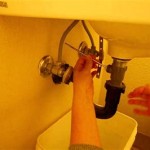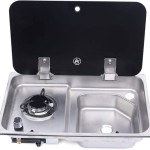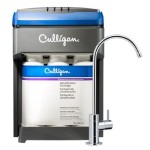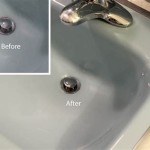Size of Sink Drain Pipe: A Comprehensive Guide
The plumbing system in a residential or commercial building is a complex network of pipes and fittings. A critical component of this system is the drain pipe responsible for carrying wastewater away from sinks and other fixtures. The size of the sink drain pipe is not arbitrary; it's a carefully considered dimension that directly impacts the system's ability to function effectively. Inadequate sizing can lead to slow drainage, clogs, and potential backups, while unnecessarily large pipes can be wasteful in terms of cost and space. Understanding the standard sizes, factors influencing the selection, and potential issues associated with improper sizing is crucial for both plumbing professionals and homeowners.
The primary function of a sink drain pipe is to efficiently remove wastewater and solids from the sink basin to the main drain line. This process relies on gravity and the momentum of the flushed water to carry waste through the system. The drain pipe must be large enough to handle the expected volume of water and solid particles without causing blockages. It also needs to provide adequate ventilation to prevent the formation of a vacuum within the pipes, which can impede drainage. Proper sizing ensures that the negative pressure created by the draining water is minimized, allowing for a smooth and efficient flow. This requires a balance between pipe diameter, slope, and the overall length of the drain line.
Standard Sink Drain Pipe Sizes
The plumbing industry utilizes a range of standard pipe sizes to ensure compatibility between different components and to facilitate consistent performance across various installations. For sink drain pipes, two primary sizes are predominantly used: 1 1/4 inches (1.25") and 1 1/2 inches (1.5"). These sizes are nominal, meaning they represent the approximate inner diameter of the pipe. The outer diameter will typically be slightly larger to accommodate the pipe wall thickness. The choice between these two sizes often depends on the type of sink, its intended use, and local plumbing codes. In many cases, the 1 1/2-inch pipe is becoming the preferred standard due to its improved ability to handle larger volumes of water and waste.
The 1 1/4-inch drain pipe is commonly found in bathroom sinks, particularly those used primarily for handwashing and light grooming activities. These sinks typically do not generate a large volume of solid waste. The smaller diameter is often sufficient for handling the moderate water flow and preventing clogs from materials like soap residue and hair. However, for sinks used for more demanding tasks, such as food preparation or heavy cleaning, the 1 1/4-inch pipe may be insufficient. Its smaller diameter is more prone to blockage from larger particles or grease buildup.
The 1 1/2-inch drain pipe is widely used in kitchen sinks, utility sinks, and other fixtures where a greater volume of water and solid waste is expected. The larger diameter offers a significant improvement in drainage capacity, reducing the likelihood of clogs and backups. Kitchen sinks, in particular, often handle food scraps, fats, oils, and other debris that can easily accumulate and cause blockages in smaller pipes. The 1 1/2-inch drain pipe provides a more robust solution for managing this type of waste. It is also often required by local plumbing codes for fixtures with a higher risk of clogging.
While 1 1/4-inch and 1 1/2-inch are the most common sizes, larger drain pipes may be necessary in specific situations. For example, a commercial kitchen with multiple sinks or a sink used for industrial purposes may require a larger drain line to handle the increased volume of wastewater and solid waste. These larger pipes, typically 2 inches or greater, are designed to provide sufficient drainage capacity and prevent overloading the plumbing system.
Factors Influencing Sink Drain Pipe Size Selection
The selection of the appropriate sink drain pipe size is a critical decision that should be based on a variety of factors. Ignoring these factors can lead to plumbing problems that are costly and inconvenient to resolve. One of the most important considerations is the type of sink and its intended use. As previously mentioned, kitchen sinks generally require a larger drain pipe than bathroom sinks due to the greater potential for solid waste accumulation. Similarly, a utility sink used for cleaning paintbrushes or washing greasy tools may benefit from a larger drain to handle the increased volume of waste. The frequency of sink usage should also be considered. A heavily used sink will generate more wastewater and solid waste, necessitating a larger drain pipe.
Local plumbing codes and regulations play a significant role in determining the permissible drain pipe sizes. These codes are designed to ensure the safety and efficiency of the plumbing system and to prevent potential health hazards. Many jurisdictions have specific requirements for drain pipe sizes based on the type of fixture and its intended use. It is essential to consult with a licensed plumbing professional or local building department to determine the applicable codes and regulations before installing or modifying any plumbing system. Failure to comply with these codes can result in fines or the need to rework the installation.
The length and slope of the drain line also influence the appropriate drain pipe size. Longer drain lines require a larger diameter to maintain adequate flow and prevent clogs. The slope of the drain line, typically expressed as inches per foot, is crucial for ensuring proper drainage. An insufficient slope can cause wastewater to accumulate in the pipe, leading to blockages. The slope should be consistent throughout the drain line, without any dips or sags that can trap waste. The combination of pipe size and slope determines the carrying capacity of the drain line and its ability to handle the expected volume of wastewater and solid waste.
The type of materials being drained also contributes to the decision-making process. Sinks used for disposing of acidic or corrosive substances may require drain pipes made from materials that can withstand these chemicals. Similarly, sinks that frequently handle grease or oil may require larger drain pipes or the installation of a grease trap to prevent the accumulation of these substances in the drain line. The compatibility of the drain pipe material with the type of waste being drained is essential for ensuring the longevity and reliability of the plumbing system.
Potential Issues with Improperly Sized Sink Drain Pipes
Selecting an inappropriate sink drain pipe size can lead to a variety of plumbing problems, ranging from minor inconveniences to serious structural damage. One of the most common issues is slow drainage. If the drain pipe is too small to handle the volume of water and waste, the water will drain slowly, causing it to pool in the sink basin. This can be frustrating for users and can also lead to the buildup of soap scum and other residues in the sink. Slow drainage can also be a sign of a more serious underlying problem, such as a partial blockage in the drain line.
Frequent clogs are another common symptom of an undersized drain pipe. When the pipe is too small, solid waste particles are more likely to accumulate and block the flow of water. This can lead to frequent clogs that require manual clearing with a plunger or drain snake. In severe cases, the clog may be located deeper in the drain line and require the assistance of a professional plumber to remove. Over time, frequent clogs can damage the drain pipes and fittings, leading to leaks and other structural problems.
Backups are a more serious consequence of improperly sized drain pipes. If the drain pipe is unable to handle the volume of wastewater, it can back up into the sink or other fixtures. This is not only unsanitary but can also cause water damage to the surrounding area. Backups can also indicate a problem with the main drain line, which may require extensive repairs. In some cases, backups can lead to sewage overflows, which pose a significant health hazard.
Gurgling sounds emanating from the drain are another indication of potential problems with the drain pipe size or ventilation. These sounds are caused by air being sucked into the drain pipe as water flows through it. This can indicate that the drain pipe is not properly vented or that it is partially blocked. Gurgling sounds can also be a sign of negative pressure within the drain line, which can impede drainage and lead to backups. Proper ventilation is essential for ensuring smooth and efficient drainage and for preventing the formation of vacuums within the plumbing system.
Finally, improper drain pipe sizing can lead to increased maintenance costs. Frequent clogs and backups require more frequent cleaning and repairs, which can add up over time. In severe cases, the drain pipes may need to be replaced altogether, which is a costly undertaking. Investing in the correct drain pipe size from the outset can save money in the long run by reducing the need for maintenance and repairs.

What Is The Standard Kitchen Sink Drain Size

Choosing The Right Drain Pipe Size For Your Plumbing

Plumbing Standard Height For Kitchen Sink Drain Exit From Wall Home Improvement Stack Exchange

Numhew Bathroom Sink Drain Kit 1 4 In 22 63 H X 6 88 W 25 D Pipe Replacement I3i4y7i4 The Home

Maximum Length For Fixture Drains

Kitchen Sink Drain Through Floor P Trap Arm Length

Choosing The Right Drain Pipe Size For Your Plumbing
Bathroom Sink Drain Ing Guide Signature Hardware

Bath Sink P Trap In Brass 1 25 Inch Pipe Wm 25ptrap

What Size Drain Lines For A Shower Sink And Toilet Youtube







